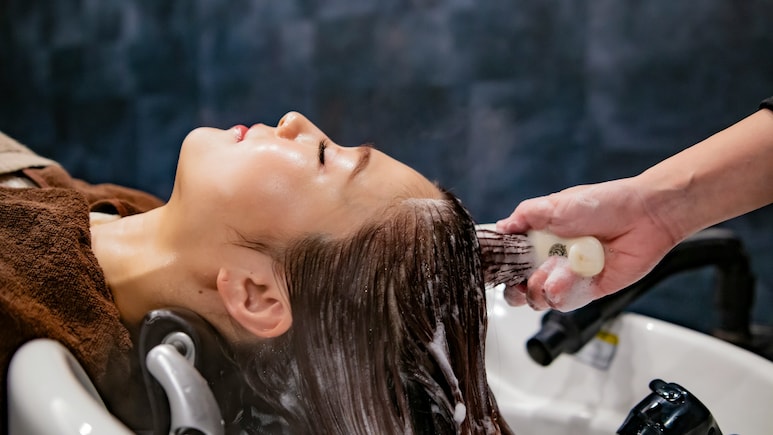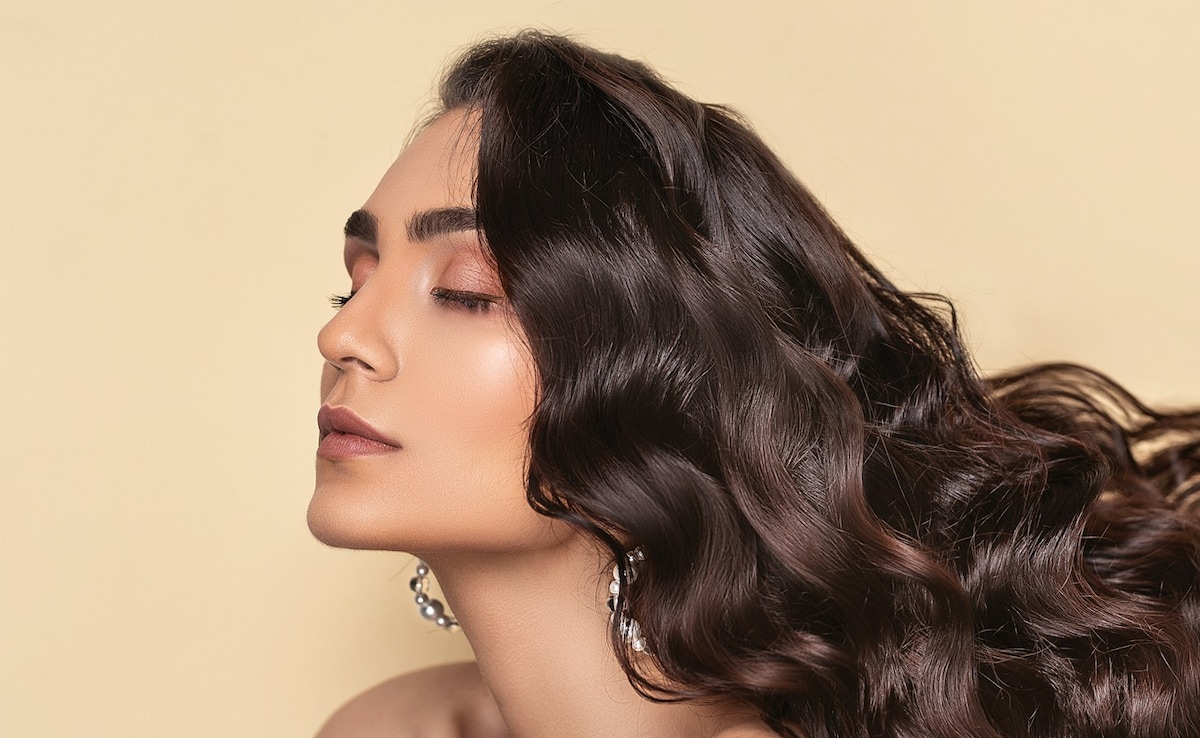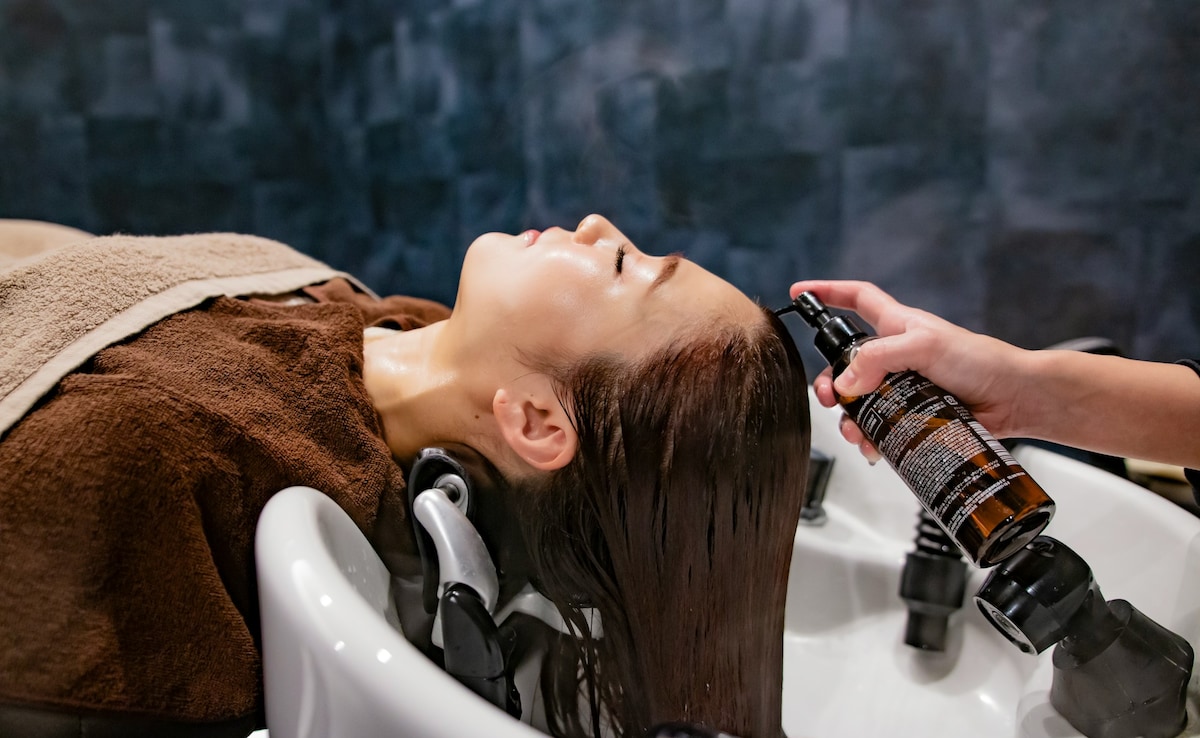
With more salons and cosmetology clinics in India now offering hair botox treatment, that too at more and more affordable prices, it's quite natural for you to be curious and ask: what exactly is hair botox, do I need it, and is it safe? For those unaware, hair botox is a trending deep conditioning repair treatment that promises smoother, more hydrated hair without the harsh chemicals of keratin or cysteine treatments. But is it really worth it? Does it work? And who should avoid it? If these ae indeed questions you have been asking on your salon visit, while carousing through an elaborate menu of treatments for your hair, then you need to understand the basics. Let's uncover the science behind hair botox treatments, compare it with cysteine and keratin alternatives, and share safety guidelines-so you can make an informed choice. Whether you're a student in Delhi managing humidity or a working professional in Mumbai battling dry, brittle hair-this guide is for you.
What Is Hair Botox?
Despite its name, hair botox does not involve botulinum toxin. Rather, it's a rich cocktail of proteins, amino acids, vitamins (E, B5), collagen complexes, antioxidants, and sometimes keratin, designed to coat and seal damaged hair cuticles. The goal is to deeply condition your hair so that there's visible frizz reduction, shine, and soft feel-without changing your hair structure.
How Is It Different From Cysteine Or Keratin Treatments?
Hair botox is quite dissimilar to keratin and cysteine hair treatments. Keratin treatment often requires formaldehyde or aldehyde agents, plus intensive heat via flat ironing, to straighten and lock in shine-especially for thick or curly hair. Cysteine treatment, a variant of keratin based smoothing using amino acids, aims to relax curls but still involves heat and chemicals, and can weaken hair over time. Hair botox visually resembles keratin results-smooth and glossy-but without the structural change. It's ideal if you want to retain volume and natural texture.

Photo Credit: Unsplash
Procedure And Ingredients: What Happens In A Hair Botox Session?
A typical hair botox treatment session lasts 45-60 minutes in a salon. The process usually includes the following steps and ingredients:
- The process starts with a consultation with a hair expert who studies your scalp and hair quality to understand your hair needs. This step is crucial in determining what your specific needs are.
- Your hair is washed with clarifying or stripping shampoo to open the cuticle.
- The botox formula, which is basically a nourishing mask, is generously applied from mid-shaft to tips.
- The botox formula is allowed to rest and absorb for about 30-90 minutes, depending on your hair quality and needs.
- The hair is finally rinsed, blow dried, and sealed with a flat iron to lock in the shine. This is also the step where your hair can be styled as per your wish.
- Aftercare: Experts usually recommend that you should avoid washing your hair for two-three days after getting a hair botox treatment, use sulfate free shampoo, limit sun and humidity exposure to prolong effects.
Who Can Benefit From Hair Botox?
As mentioned before, like every treatment, hair botox can benefit people with a specific set of hair troubles more than others.
- It is mostly suited to people with dry, frizzy, brittle or chemically treated hair, who are looking to restore shine and softness.
- Those wanting to control frizz and split ends without changing hair texture may also want to explore this treatment.
- Reportedly, hair botox also helps people with fine or thin hair, since botox adds shine without flattening volume (unlike keratin).
- Lastly, because the hair botox formula is generally free of formaldehyde and botulinum toxin, it is also opted for by anyone who prefers minimal chemical exposure.
Who Should Avoid Or Be Cautious?
Not all treatments, no matter how free of chemicals or harmful elements it claims to be, are for everyone. Knowing the difference between what you need and will suit your overall health status, and what you want to get done because everyone else is critical for you and every consumer out there. So, here are a few categories of people who should think thoroughly and evaluate the pros and cons before going for a hair botox treatment.
- Pregnant or lactating women, or people with severe scalp conditions: salons typically recommend avoiding both keratin and botox treatments during these times.
- People with known allergies to botanical extracts, proteins, vitamin complexes: even "natural" ingredients can trigger reactions. A patch test or consultation with a dermatologist is highly advised.
- Those with fine, straight, or recently coloured/chemically treated hair should avoid hair botox. Not all chemicals react well together, and many with dyed hair can experience flat, limp texture or volume loss after getting the treatment.
- While most consumers on social media report that hair botox can last quite a long while, it is important to note that every treatment requires aftercare and specific maintenance to keep the results prolonged. If you are experiencing shine loss in just two-four months, or issues like flatness or even hairfall after the treatment, know that it is time to reach out to a dermatologist (if you hadn't already before going for hair botox).

Ask the salon about the ingredients used before going for a hair botox
Photo Credit: Unsplash
Safety And Side Effects: What Every Consumer Should Know
While hair botox is considered generally safer than keratin treatments (especially those containing formaldehyde), side effects may include the following:
- Temporary greasiness or build up in the first few washes as the hair absorbs nutrients.
- Allergic reactions, rare but possible. Which is why it's important to know your skin sensitivity level and opt for a dermatologist consultation.
- Changes in the long run may include flattening of volume, dullness, or mild hairfall.
What To Check Before Booking At A Salon In India
If you are opting for a hair botox at a salon in India, then here are a few checks you must do before proceeding with the treatment.
- Ask for ingredient list or brand name and ensure it's formaldehyde-free. Request a patch test if you know that you have sensitive skin.
- Choose salons with certified beauty professionals or trichologists. Avoid roadside parlours offering "botox" for very low cost.
- Ensure there is good ventilation in the salon, especially during blow-drying and sealing.
- Ask: Do you include aftercare instructions and product recommendations (like sulfate-free shampoo)? It shows that the salon cares about customer problems and will be likely to help you if there are side effects.
- Ask for before and after photos, and talk to past clients if available.
Hair botox can be a useful treatment for repairing frizz-prone or chemically damaged Indian hair, provided you're clear on its temporary nature and your expectations. It offers shine, softness, and ease-of-styling-without straightening your hair or exposure to harsh chemicals. But it's not risk-free. You and every Indian consumer should double-check with salons for product ingredient disclosure, and always follow professional aftercare steps. If in doubt, speak to a qualified dermatologist or trichologist before proceeding.
Disclaimer: This content including advice provides generic information only. It is in no way a substitute for a qualified medical opinion. Always consult a specialist or your own doctor for more information. NDTV does not claim responsibility for this information.
Track Latest News Live on NDTV.com and get news updates from India and around the world

